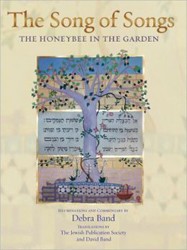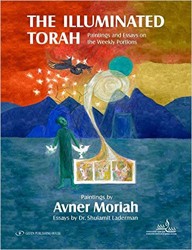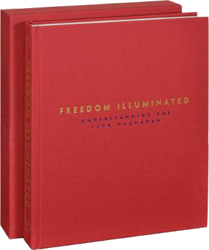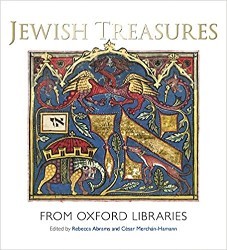Over the past half-century, numerous books have dealt with the history and iconography of Jewish illuminated manuscripts. Scholars have elucidated social and cultural contexts of the artistic codices, particularly Hebrew manuscripts produced during the medieval and Renaissance eras. Art historians have primarily led the charge in comparing Jewish works of art to those produced within the dominant societies, and specialists have occasionally explored the relationship between illustration and text. Beyond aestheticism, however, the publications have not generally targeted a popular audience.
The present book, edited by Marc Michael Epstein, professor at Vassar College, was designed to bring the state of the field to the interested “nonspecialist.” Consisting of thirteen chapters, with several in-depth “focus” essays, the book covers nearly a millennium of Jewish manuscript art. Epstein served as the volume’s primary author, but nine additional contributors amplify his voice. Scholars of various fields within Jewish Studies and Jewish book history, as well as a contemporary manuscript illuminator, lend an air of collectivity to the project. The result is a book that successfully paints both a broad and detailed landscape.
The text is clearly written, and the approximately three hundred illustrations are well chosen, beautifully reproduced, and smartly laid out on the printed page. Throughout the volume, Epstein guides the reader through the place of books in Jewish life, the extent and importance of the canon, and the nature of Jewish life as portrayed in manuscript. The book explains the construction of an illuminated manuscript – including the relationship between patrons, scribes, and illuminators – and elucidates the iconography of many of the world’s most famous Jewish manuscripts. In addition, several chapters explore geographic regions, including Italy, Ashkenaz, Spain, and Persia. Other chapters address gender and family, the sacred and the profane, the importance of Jerusalem, depictions of the heavens, and contemporary illuminators.
Epstein’s goal is to bring the history of Jewish manuscript art to the public at large. He reevaluates previous scholarship on Hebrew illuminated manuscripts and posits new and sometimes daring theories. For instance, Epstein argues for the renaming of the famous Birds’ Head Haggadah, because the iconography chosen to represent humans in the manuscript more closely resembles griffins. Likewise, going further than previous scholars on the subject, Epstein emphasizes Jewish redemption and anti-gentile polemic in his survey of iconography.
Ultimately, while occasionally speculative, Epstein’s theories are intriguing and are certain to pique the interest of his readers. Perhaps more importantly for most potential readers, Skies of Parchment reflects the essence and beauty of its subject matter.
Related Content:
- Illuminated Hebrew Manuscripts
- Barbara Ashkenaz and Michal Smart: You Probably Wouldn’t Think to Read This for Book Club, But…
- Debra Band: Arise! Arise! The Backstory
David Sclar studies Jewish history and culture in the early modern period. He earned his doctorate at the Graduate Center of the City University of New York, and has held fellowships at Harvard University, Princeton University, the University of Oxford, the University of Toronto, New York University, and the Center for Jewish History. He worked for several years in the Special Collections of the Library of the Jewish Theological Seminary, and presently teaches history at the Frisch School.





